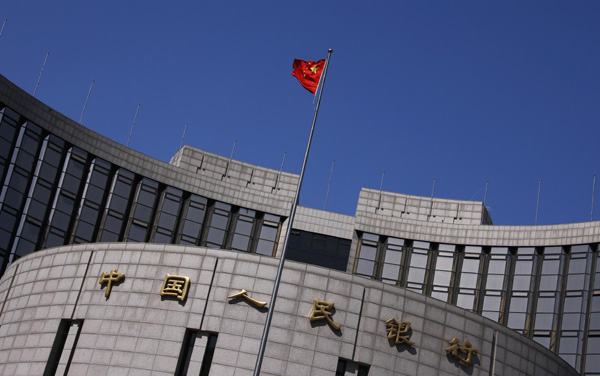|
 |
|
A Chinese national flag flutters outside the headquarters of the People's Bank of China, the Chinese central bank, in Beijing, April 3, 2014. [Photo/Agencies] |
BEIJING - The universal reserve requirement ratio (RRR) cut starting on Thursday is not the start of a strong stimulus for the economy, a senior official of China's central bank told Xinhua on Thursday.
The cut was an ordinary policy operation by the People's Bank of China (PBOC) based on liquidity conditions and the economic situation, Lu Lei, head of the PBOC's research department, said in an interview.
The central bank on Wednesday decided to lower the RRR, the minimum level of reserves banks must hold, by 50 basis points from Feb 5, the first universal RRR cut since May 2012.
The upcoming Spring Festival is a factor, as funding shortages occur every year around this time in China due to strong cash demand. Taking the current position of foreign exchange reserves into account, open market operations alone are not adequate to fill the funding gap, he added.
Lu denied that the RRR cut represented a policy shift: The central bank conducts operations by sticking to the principle of a balance between tight and loose, in line with economic indicators, Lu said.
The PBOC also increased support to targeted areas, cutting the RRR by an extra 50 basis points for qualified banks lending to small firms, the farming sector and major water projects.
Lu noted that the targeted RRR cut reflects the government's desire to restructure the economy.
The move comes days after the purchasing managers' index, a gauge of manufacturing activity, fell below 50 for the first time since October 2012, a sign of a weakening economy. The world's second largest economy grew at the slowest rate for 24 years in 2014.
China's producer price index (PPI) has been declining for 34 months in a row, indicating enormous pressure on the real economy, especially on small businesses, Lu noted.
The structural RRR cut is meant to guide more financial resources to the most demanding sectors in the real economy. The central bank cut benchmark interest rates for the first time in more than two years in November 2014.
As to whether the liquidity released by the moves has flowed into the real economy, Lu said a study by the central bank showed that the weighted average interest rates of renminbi loans had dropped significantly from the second quarter of 2014 to the fourth.
The research chief admitted that small firms suffer higher financing cost than large ones, not an exclusively Chinese phenomenon. Lu wants more reform to encourage private companies to enter the financial sector and a multi-tier financial market promoted.
As to whether the new liquidity has hit the stock market as many experts supposed, Lu said the financial market normally reacts faster than the real economy and the real effect on the real economy takes a longer time to show.
